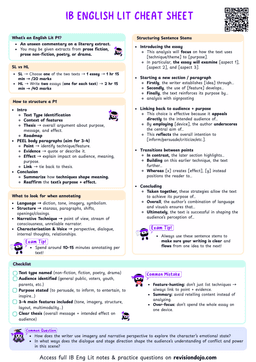Techniques Shape Visual Narratives
Visual techniques
Visual techniques are the deliberate design choices that shape how we experience a visual text.
- Just like diction and structure shape a written text, there are techniques that shape a visual one.
- Choices of visual techniques include:
- Layout: How elements are arranged on the page or screen.
- Typography: The style and size of text.
- Color: The use of color to create mood or highlight meaning.
- Panel Arrangement: In graphic novels, how panels are organized to control pacing.
- Stage Directions: In plays, instructions for actors' movements and positioning.
Visual techniques are not just decorative they guide your interpretation of the text.
Why Visual Techniques Matter
- Visual techniques do three key things:
- Direct Attention: A character in bright red against a grey background instantly stands out.
- Control Pacing: Fast scene cuts or tightly packed panels create urgency. Wide empty spaces slow things down.
- Mirror Meaning: A cracked mirror in a scene isn’t just decoration it might reflect a fractured identity or relationship.

- When you analyse visuals, you’re asking the same core question:
- Why did the creator make this choice and what does it do?
Layout
Layout
The spatial arrangement of elements on a page or screen. It guides the reader's eye and controls the flow of information.
Vocabulary to Describe Layout
| Centered | Marginalized |
|---|---|
| Foreground | Background |
| Symmetrical | Asymmetrical |
| Balanced | Unbalanced |
| Framed | Isolated |
| Cluttered | Minimal |

- In a magazine ad, the product could be placed at the center.
- This draws immediate attention, while supporting text is placed around it.


